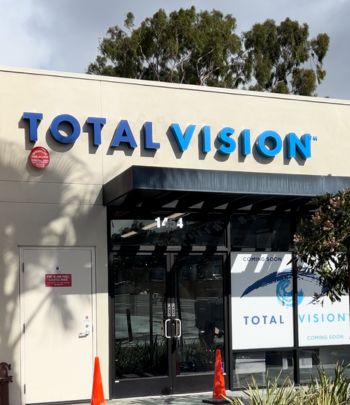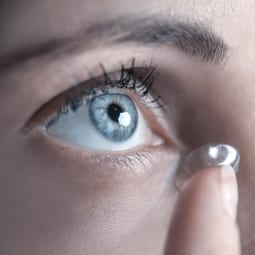Protect & Preserve Your Eyesight
Serious eye conditions are extremely common, with an estimated 93 million adults in the US at high risk for severe vision loss. Many serious eye diseases do not have obvious symptoms, which means that visiting your optometrist is one of the best ways to prevent possible vision loss. Early detection gives you the earliest access to treatment, often when it’s most effective.
Without a proper diagnosis, treatment plan, or management strategy, many common eye diseases can significantly affect your vision. Want to prevent vision loss? Please, book your appointment today.
Common Eye Diseases
Glaucoma
Glaucoma is the name used to describe a group of diseases that affect the optic nerve. Glaucoma is often referred to as “the silent thief of sight,” as it rarely has symptoms in the early stages and goes unnoticed until irreversible vision loss has occurred.
Typically, high intraocular pressure is associated with a few different types of glaucoma, although elevated eye pressure is not always the culprit. Glaucoma is the leading cause of blindness in people over 60 years old, but you can often prevent it with preventative care and early treatment.
There are 4 major types of glaucoma:
- Primary open-angle glaucoma: This is the most common type of glaucoma and it progresses very gradually. It occurs when the eye’s drainage angle is too narrow, causing fluid to build up over time. The fluid build-up causes eye pressure to rise, which puts stress on the optic nerve and damages it.
- Angle-closure glaucoma: This is a less common but more severe type of glaucoma. It occurs when the eye’s drainage angle becomes suddenly blocked, causing fluid and pressure to rise rapidly. This is called an acute attack and is considered a medical emergency.
- Normal-tension glaucoma: Also called low-tension glaucoma, normal-tension glaucoma occurs when the optic nerve sustains damage without elevated intraocular pressure. This type of glaucoma is considered a mystery, as it’s unknown why damage to the optic nerve occurs.
- Congenital glaucoma: This type of glaucoma occurs in babies when their drainage angle does not develop properly while in the womb. Congenital glaucoma is a rare condition that is inherited but can often be treated with surgery.
Age-Related Macular Degeneration
Age-related macular degeneration (AMD) is a progressive disease that causes the gradual loss of central vision. Often, AMD produces dark spots in your central field of vision, but your peripheral vision remains normal. AMD is one of the leading causes of blindness in people over 50 and does not have apparent symptoms before vision loss has already begun.
There are 2 types of AMD:
- Dry AMD is the more common of the 2, affecting approximately 80% of individuals with AMD. It occurs when the macula thins and small clumps of protein begin to grow, obstructing vision.
- Wet AMD is less common, but much more severe. Wet AMD only affects around 20% of individuals with AMD. It occurs when new, abnormal blood vessels grow under the retina, swell, burst, and leak fluids into the eye, which can lead to scarring.
Cataracts
Cataracts are a natural part of aging, occurring when the eye’s natural lens becomes cloudy. The cloudiness happens when the proteins in the lens break down, making vision blurry, hazy, or “washed out.”
Cataracts often happen gradually and are most common in individuals over the age of 60. However, a diet rich in certain vitamins and minerals can help to prevent cataracts from forming.
Conjunctivitis
Conjunctivitis, or “pink eye,” is a common eye condition that affects the thin membrane covering the whites of the eyes (the conjunctiva). Most types of conjunctivitis are extremely contagious, so if you’re experiencing red, itchy eyes with more mucus than normal, you should visit your optometrist.
There are 3 common types of conjunctivitis:
- Viral conjunctivitis is the most common type of conjunctivitis and is very contagious. It’s caused by a viral infection and is typically accompanied by burning, red eyes with a watery discharge.
- Bacterial conjunctivitis is also extremely infectious and is caused by a bacterial infection. Symptoms include sore, red eyes with sticky pus.
- Allergic conjunctivitis is the only non-contagious type. An allergic reaction causes it, is accompanied by red, itchy, watery eyes, but can usually be treated with over-the-counter antihistamines.


Prevent Eye Disease & Book Your Appointment Today!
If you’re experiencing eye disease symptoms or just want to get an assessment, we’re here to help. Give our office a call, and we’d be happy to book you in for an appointment!
Come See What We’re About

Visit us
Total Vision Encinitas, formerly known as Pacific View Eyecare Center, is located on the corner of Encinitas Boulevard and El Camino Real.
- Phone: 760.753.6336
- Email: [email protected]
- 1454 Encinitas Boulevard
- Encinitas, CA 92024
Hours of Operation
- Monday: 9:00 AM – 5:00 PM
- Tuesday: 9:00 AM – 5:00 PM
- Wednesday: 9:00 AM – 5:00 PM
- Thursday: 9:00 AM – 5:00 PM
- Friday: 9:00 AM – 2:00 PM
- Saturday: Closed
- Sunday: Closed


Our Brands




Our Google Reviews
Be the First to Know,
Be the First to Win.
From eye health insights to exclusive giveaways, your feed just got a lot clearer.










